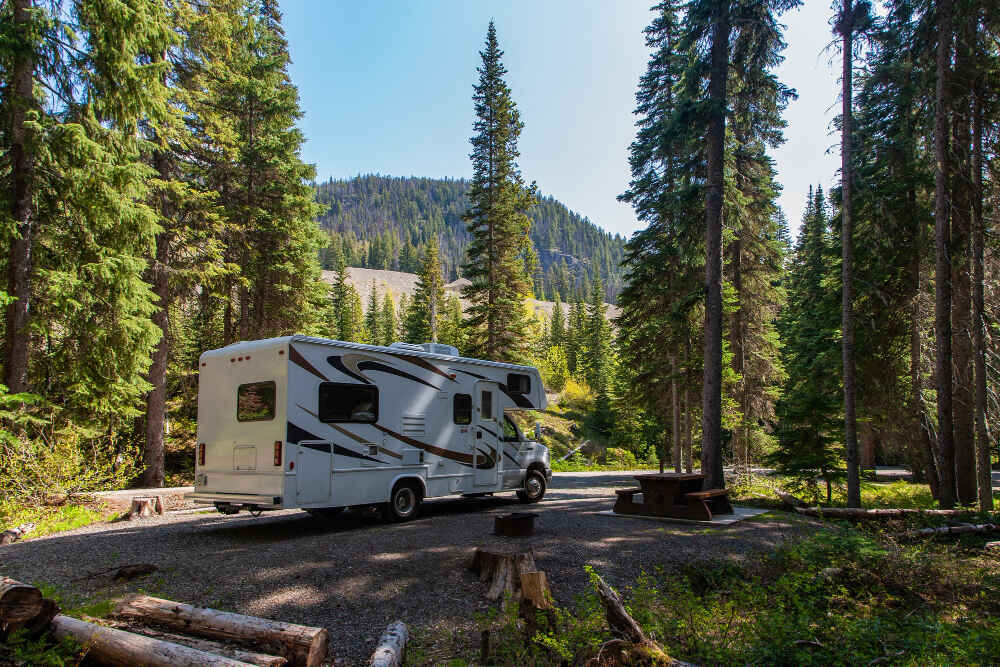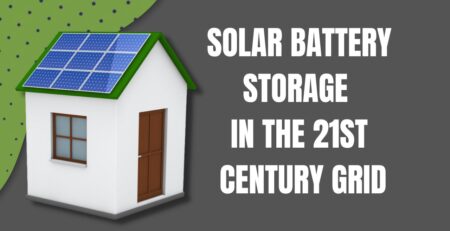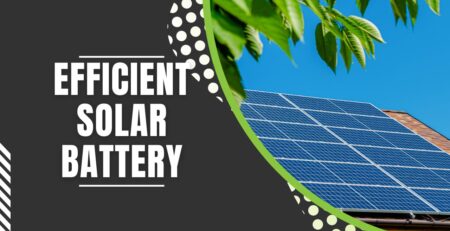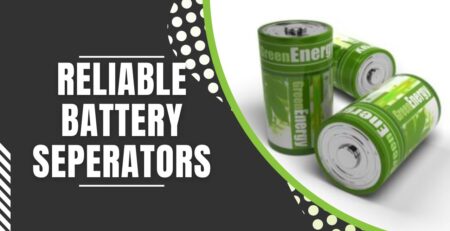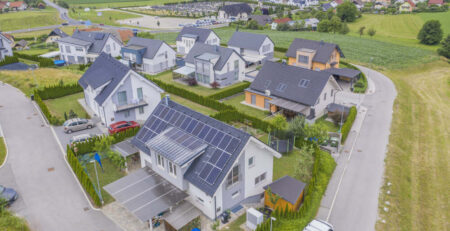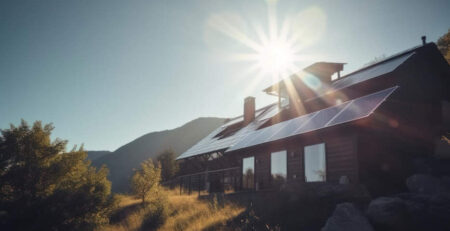Ultimate Guide to Solar RV Packages in Canada: Costs, Components, and Sizing Your System
With dependable solar systems designed for the Canadian environment and camping lifestyle, Hub Power has spent decades helping Canadians take charge of their on-the-go energy. Knowing the fundamentals of solar RV packages in Canada can help you pick the best kit the first time, whether you’re a weekender trying to keep a few necessities running without a generator or a full-timer seeking clean, quiet power for travelling across the nation. The components of a full RV solar system, how to configure it for your needs, how much it costs, and how Canadian weather and travel patterns influence the ideal configuration for your rig are all covered. We’ll also offer helpful installation and maintenance advice based on our experience working with clients.
What a complete RV solar package includes
There is more to a good RV solar package than just a roof-mounted panel. Our kits at Hub Power are made as whole systems with precisely matched parts to ensure reliable performance and easy installation. Solar panels, a charge controller, wiring and fusing, roof mounting hardware, and the battery bank that the system charges are the essential components. In order to optimize harvest under fluctuating sun and cooler temperatures, we combine monocrystalline panels in 100W, 200W, 400W, and extendable configurations with MPPT charge controllers in many of our solar RV packages in Canada. Roof gland passthroughs, mounting brackets, appropriately sized wiring, and the hardware required to safely secure the system are all included.
Although batteries can be bought individually, total performance depends on the battery chemistry you select. While a growing number of RVers are switching to LiFePO4 lithium batteries for their increased useful capacity, reduced weight, and quicker charging, many still rely on sealed AGM batteries for longevity and affordability. Our energy specialists assist in matching the battery bank and solar array to the controller so that you can charge effectively without oversizing or undersizing any parts.
How much power do you need
Energy budgeting is the first topic of discussion when discussing solar RV packages in Canada. It’s an easy technique that gives you control over the size. Start by making a list of the appliances you want to use, including lights, a water pump, vent fans, a 12V compressor refrigerator, a phone and laptop charger, a CPAP machine, a television, and sporadic inverter loads such as an induction cooktop or blender. Next, figure out how many amps each appliance uses and project how many hours they are used each day. You can calculate amp-hours per day by multiplying amps by hours, and watt-hours by multiplying by your system voltage. After adding up your daily total, factor in a 20–30% safety margin for seasonal volatility, overcast weather, and shade.
A typical weekend camper, for instance, may use 40–60 amp-hours per day at 12V (about 500–750 Wh) with LED lights, a small 12V refrigerator, and a light gadget charging. On bright days for a large portion of Canada’s camping season, a 200W to 300W solar array with a high-quality MPPT controller can supply that. With a larger refrigerator, regular laptop use, Starlink or a cellular booster, and sporadic 120V inverter loads, a full-time RVer may use 120–200 Ah (1.5–2.5 kWh) each day. The autonomy required for this profile between weather systems is usually provided by a 400W–600W array combined with a reliable controller and a lithium battery bank.
Canadian sun hours and seasonal realities
The significant variance in sun exposure by province and season is one of the reasons we customize solar RV packages in Canada especially for our clientele. Much of the country experiences summertime peak solar hours that vary from about 4 to 6, with the Prairies and interior regions having the highest values. Because of cloud cover and lower sun angles, there can be greater unpredictability in coastal and northern areas. The amount of available sunlight decreases rapidly during shoulder seasons, and because slanted, stationary, flat panels are less effective at capturing energy. Because cells function better in colder temperatures, MPPT charge controllers enable panels to run at higher voltages, enhancing harvest. We size arrays with enough headroom to cover partial shadow or a few overcast days, and we advise customers to prepare for real-world averages rather than ideal conditions.
Fixed versus portable panels
Many RVers in Canada wonder if they should go with portable folding panels, roof-mounted panels, or a mix of the two. Depending on the roof structure, roof-mounted panels can be set up with low-profile rigid or lightweight flexible panels. They are also convenient and always charge when the sun is out. With portable panels, you can park in the shade and still have the panel in direct sunlight, giving you more campground options. When you need more capacity, they’re also a wonderful way to supplement a smaller roof array. To give you the best of both worlds, we provide extension kits and portable modules in addition to dependable roof systems in our solar RV packages in Canada.
Choosing the right charge controller
The core of the system is the charge controller, which transforms the fluctuating output from the panel into a clean, battery-friendly charge profile. MPPT (Maximum Power Point Tracking) controllers usually supply 15–30% more energy than PWM controllers when temperatures can fluctuate and daylight might be limited during shoulder seasons. This is especially true when the panel voltage is much greater than the battery voltage. With a properly sized MPPT controller, you can wire panels in series to increase voltage while controlling currents. This lowers cable losses and improves the efficiency of longer roof-to-controller links. Strong MPPT units with configurable profiles for AGM, Gel, and LiFePO4 lithium batteries are included in our kits.
Battery options for Canadian conditions
How long you can survive a cloudy stretch or a busy evening depends on your batteries. AGM batteries are still widely used because of their ability to withstand cold temperatures, their sealed design, and their reliable cycle life at a reasonable cost. Without sacrificing lifetime, they provide about 50% useful capacity. Lithium iron phosphate (LiFePO4) batteries provide a significant improvement in performance, including a greater cycle life, faster charging, a smaller weight that facilitates RV loading, and up to 80–100% useful capacity. Low-temperature charge protection is a feature of modern LiFePO4 packs, which are ideal for Canadian RVers who seek three-season experiences when utilized within temperature ranges or in conjunction with heating solutions. Taking into account your travel season and storage habits, we help you in striking a balance between initial cost and long-term value.
Wiring, fusing, and safety
A safe system is one that is dependable. Grounding, over-current protection, and the right wire gauge are just as crucial as the panels themselves. Since heat and voltage loss become serious problems on longer runs and higher current circuits, our solar RV packages in Canada come with fuses and cables that are the right size. We suggest UV-resistant mounting gear, weatherproof roof glands, and marine-grade tinned copper cable. Fuse or breakers sized to the anticipated currents should be used to protect each section, including the battery connection, panel strings, and controller input and output. In order to preserve service access to vital components, we also walk clients through best practices for routing cables away from heat sources and sharp edges.
How much does an RV solar package cost?
Capacity, component quality, and whether a professional or do-it-yourself installation is required all affect cost. For weekenders, a small 100W to 200W starting kit with an MPPT controller typically costs in the lower hundreds of dollars. While extendable 600W systems with lithium batteries and higher-capacity controllers imply a larger investment associated with off-grid objectives, a 400W roof kit with a sturdy controller and full mounting hardware falls into the midrange. Batteries are an important factor: LiFePO4 has a greater initial cost that is offset by longer life, deeper usable capacity, weight savings, and quicker charge acceptance, while AGM banks continue to be cost-effective. In order to optimize value and minimize installation time, we bundle components when designing solar RV packages in Canada, ensuring a predictable total cost of ownership.
Installation considerations
Recurring headaches or years of dependable service depend on a clean, waterproof installation. To reduce shade from air conditioners, vents, and racks, place panels on the roof. Select areas with clear sky exposure because even a little shade on one panel in a series string can lower the output of the entire array. Low-profile rigid panels on aluminum frames are durable and provide airflow below to reduce panel temperatures and increase efficiency for the majority of RVs. Flexible panels can be used on weight-sensitive roofs and curved surfaces, but mounting and heat dissipation must be carefully considered. Plan cable entry through a gland that keeps water out and strain off the wires, then use an appropriate RV roof sealant to seal all penetrations. To reduce voltage drop on the charge side, mount the charge controller as close to the battery as is practicable. Make sure all electronics have adequate airflow.
Monitoring and managing your energy
A good battery monitor turns speculation into assurance. Amp-hours in and out are tracked by shunt-based monitors, which also display history, charge/discharge rates, and state of charge. With the Bluetooth connectivity that many MPPT controllers provide, you can watch solar harvest and adjust settings right from your phone. We advise combining the kit with a reliable monitor with our solar RV packages in Canada so you can observe how the system is impacted by the weather, shade, and your daily routine. You can significantly boost your autonomy by making little behavioral modifications like pre-cooling a refrigerator, running bigger loads during peak sun, or tilting panels while parked for longer stays.
Living with solar across Canada
Solar makes camping more peaceful and eco-friendly, and it works well with Canada’s amazing system of national, provincial, and Crown parks. Early or late-day shade is typical in wooded areas; allowing just a little bit more panel capacity than the bare minimum provides a buffer. Longer summer days and sunny skies reward larger arrays with quick recovery on the Prairies and in the interior. Lithium batteries and a wider array give coastal RVers the extra cushion they need to stay comfortable in the face of more erratic cloud cover and marine weather systems. With the correct equipment, winter camping is feasible, but reasonable expectations are necessary due to the short days and low solar angles. For extended periods of darkness, keep panels away from snow and think about using a high-efficiency generator or alternator charging as a backup charging option.
Solar versus generator: Finding the right balance
Generators are still useful, particularly for short-term, high-power applications like air conditioning. However, low-maintenance, silent off-grid power is built on solar. The majority of daily necessities, including lighting, refrigeration, water pumps, electronics, and even small kitchen appliances, may be operated without noise or fumes with the proper-sized battery bank and inverter. Many of our clients begin with a hybrid strategy, which consists of a reliable solar base load augmented by sporadic generator use for air cooling or in inclement weather. Generator hours typically decrease significantly over time as they optimize their energy utilization, extend arrays, or upgrade batteries. We can predict anticipated solar harvest and consumption if you’re comparing options so you can see how solar RV packages in Canada stack up against your lifestyle.
Futureproofing with expandability
The needs of RVers change with time. You could switch to a more energy-efficient gadget that alters your daily routine, add a second refrigerator, or start working remotely. For this reason, we consider expandability when designing our solar RV packages in Canada. Simple decisions that save money and complications later on include picking an MPPT controller with more headroom, arranging roof space for more panels, and choosing a battery bank that can expand or be paralleled later. Additionally, we provide connectivity with inverter/chargers for convenient shore power when at a serviced site, and with DC-DC chargers so your alternator safely contributes to battery charging while travelling.
Maintenance and troubleshooting
Although Solar is generally hands-off, a few habits maintain good performance. Check fasteners and reseal where necessary while inspecting cable glands and roof mounts on a seasonal basis. Dust, pollen, and sea salt can be removed from panels using water and a gentle brush; even a thin layer can lower output. Maintain tight and corrosion-free battery terminals, and make sure your charge controller’s settings correspond to your battery’s chemistry and temperature compensation needs. Check for shade, confirm fusing, and use your monitor to determine if the controller is achieving the desired levels of absorption and float. To help you enjoy the road, our support staff assists clients in promptly diagnosing problems.
Why choose Hub Power
Hub Power is a Canadian stocking distributor that specializes in power conversion, solar energy, and batteries. We build our kits using reliable parts and maintain stock to ensure prompt delivery throughout Canada. To properly size systems, discuss tradeoffs, and suggest the best battery option, our energy specialists work closely with you. We contribute a thorough grasp of how systems function in real-world situations because we support the marine, off-grid, backup power, and motive power industries in addition to RVs. Selecting one of our solar RV packages in Canada means working with a staff that will support the system from installation to years of use.
Getting started with your system
Map out how much energy you use each day and consider where and how you camp if you’re new to solar. Give our staff those specifics, and we’ll suggest a plan that satisfies your objectives while providing flexibility. Every one of our solar RV packages in Canada is supported with parts we use ourselves, clear instructions, and informed assistance.
The road ahead
The RV industry in Canada is still embracing renewable energy, and recent developments in lithium batteries, smart controllers, and panel efficiency have made systems more portable and powerful than before. Solar becomes more than just a convenience as campgrounds get quieter and the air is cleaner; it’s a statement about how we want to travel: independent, mindful of other campers, and connected to nature. Hub Power is here to help you harness the sun and transform it into freedom, whether you’re optimizing a van conversion, outfitting a brand-new RV, or renovating an existing trailer.
Contact our team if you’re ready to explore our solar RV packages in Canada. Wherever your next journey takes you, we’ll evaluate your needs, provide a clear, affordable course of action, and supply the parts you need to begin producing your own clean power.


